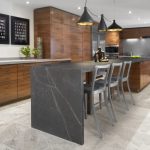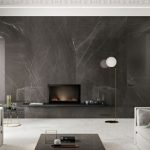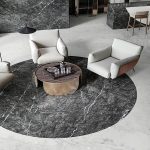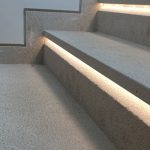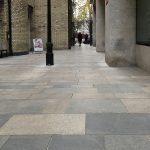Marble Finishing Techniques
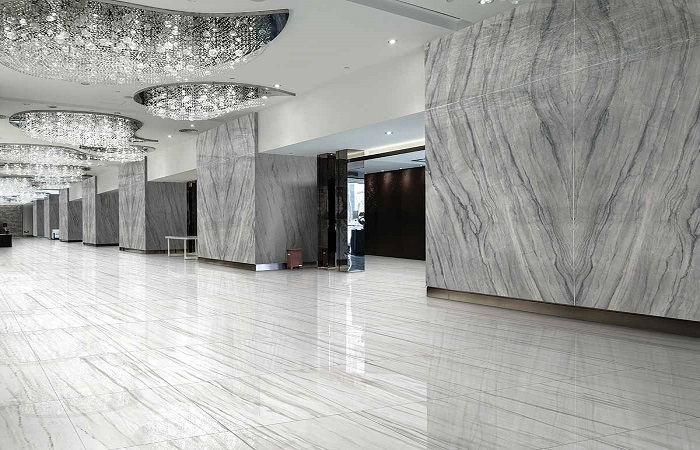
Marble Finishing Techniques: Polished, Honed, Antique, Flamed, Chiselled, Bush Hammered, Tumbled, Natural Split, Diamond Swan, Sandblasted
Marble finishing techniques will be explained in the following passage. Although it is a naturally occurring stone, marble is a soft substance with a surface that is easily worn down with regular usage. Dirt and scratches can affect marble’s appearance, clogging the crystals that reflect light and give the stone its beauty. Because of these characteristics, select a finish for floors, countertops and other applications with a marble surface not only to avoid dullness, but to protect the underlying stone.
Polished Finish
This is a high gloss and reflective surface finish that brings out the colors in the marble. The surface is polished with fine abrasives, with the degree of polish determined by the natural marble’s mineral elements and texture. Polished finished is the most popular finish for marble. Polishing gives the stone a highly reflective sheen that produces the least porous finished surface.
Before polishing, thoroughly clean the surface of all dirt, waxes and sealants. Floor and hand buffers used in conjunction with specially formulated buffing powders can accomplish the job. The most effective technique, however, is industrial diamond polishing. This precise, multistep process uses metal-bonded diamond discs to level the floor, followed by resinous diamond discs in conjunction with polishing compound to produce the shine. Because of its durability, polishing is used to finish marble floors.
Not all natural stones can be polished. Usually recommended for floor, wall and bench top coverings, polished stones are not usually recommended as external marble flooring due to their tendency to be slippery when wet.
Honed Finished
Honed finishes are actually a form of polishing, but with a major difference: The final operation uses abrasives to remove minute amounts of stone, leaving the surface with a smooth, matte finish. Honing is often used to restore damaged surfaces. Many different processes, materials and equipment can produce this finish.
Honed finishes leave marble less prone to scratches and grime, so less maintenance is necessary. This process opens the stone’s pores, however, making the surface more susceptible to staining. Honing also tends to fade the stone’s natural color. Created using different grades of abrasives under factory conditions, honed Marble is commonly used and recommended for internal floors and kitchen bench tops.
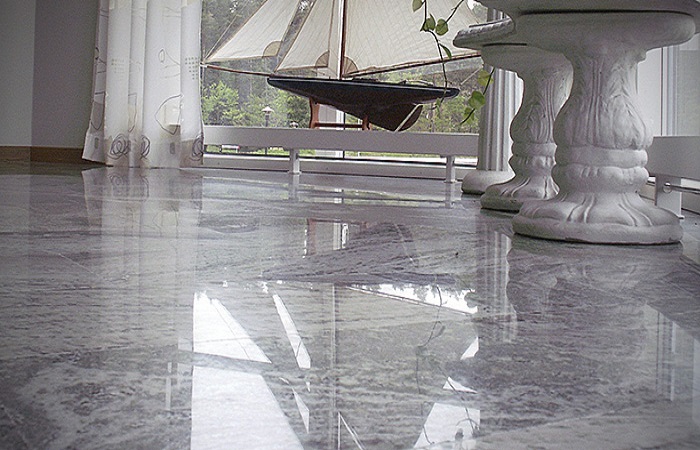
Textured, Specialized Finishes
Some manufacturers provide a wide selection of finishes for marble, but many are not suitable for use on floors. Leathering is a textured finish similar in appearance to honing that closes marble’s pores and produces a slight sheen. It is preferred for dark-colored stones. A caressed finish takes leathering one step further, adding gloss to the surface. In the following, we will discuss some more special types of marble finishes.
Antique Finish
The antique finish is achieved by acid etching the surface of the marble to produce a popular finish used often for outdoor areas but able to be used indoors. Other methods which can be used for creating an antique look include brushing the surface finish of the marble with special diamond brushes.
Flamed Finish
A finish when natural marbles are exposed to high temperature flames whilst wet.
Chiselled Finish
Chiselled Finish is achieved using chisels. The appearance of this type of natural marble finish can be likened to a linen texture with the fine grooves positioned closely together and parallel to the edges.
Bush Hammered Finish
Bush hammered is a natural marble finish achieved by the application of a hydraulic bush hammer to the surface. The appearance of the bush hammered finish is industrial, with a large number of close and small indents.
Tumbled Finish
This has a lightly rough texture which is easily maintained and again less sensitive to scratches. It is the process of sawing or honing and then tumbling the natural marble that gives a worn look with a natural patina from day one.
Natural Split Finish
Normally associated with sandstones, and lime-stones, a natural split finish is the finish which highlights the surface texture of the natural stone.
Diamond Sawn Finish
The natural marble is sawn using a diamond blade. The surface appearance of this marble finish shows typical saw cut markings parallel with each other in the direction taken by the saw.
Sandblasted Finish
The natural marble is first sawn or honed, then sandblasted resulting in an appearance that is slightly rough in texture which creates a slip resistant surface suitable for outdoors.
Marble Sealing
Even with a professionally applied finish, marble stains easily when it comes into contact with acidic substances, such as vinegar, orange juice, ketchup, soda and lemonade. Cleaning marble with harsh chemicals can eat into the surface. Sealants work by filling the pores in the marble, making its surface impervious to staining. Sometimes a slight darkening occurs following application. Some manufacturers recommend that sealing be performed annually. It is an important step in the restoration of marble floors, vanities and countertops.
To learn more about us, click here.
Send your price quotes directly to our WhatsApp through this Link: https://wa.link/ord5k8
Sources
homeguides.sfgate.com/marble-finishing-techniques-35342.html
dream-stone.com/2018/03/13/different-surface-finishes-for-stones
- Back To Articles
- Antique, antique finish, armani grey marble, armany grey, Bush hammered, bush hammered finish, Chiselled, chiselled finish, Diamond Swan, Flamed, flamed finish, grey Armany, honed, honed finished, honed surface finish, marble finishing, Marble Finishing Techniques: Polished, marble processing, marble sealing, Natural Split, Pietra Grey Marble, Pietra Grey Marble Tiles, polished finished, polished surface finished, Sandblasted, Sealing Marble, Tumbled
Article
Natural Stone Applications
- 22 December 2022
Iranian Stones Introduction According to Source and Quarry
- 21 December 2022
Technical Stone Introduction and Quarrying Procedures
- 21 December 2022
Categories
- blog757
- news1
- Specialized articles756

